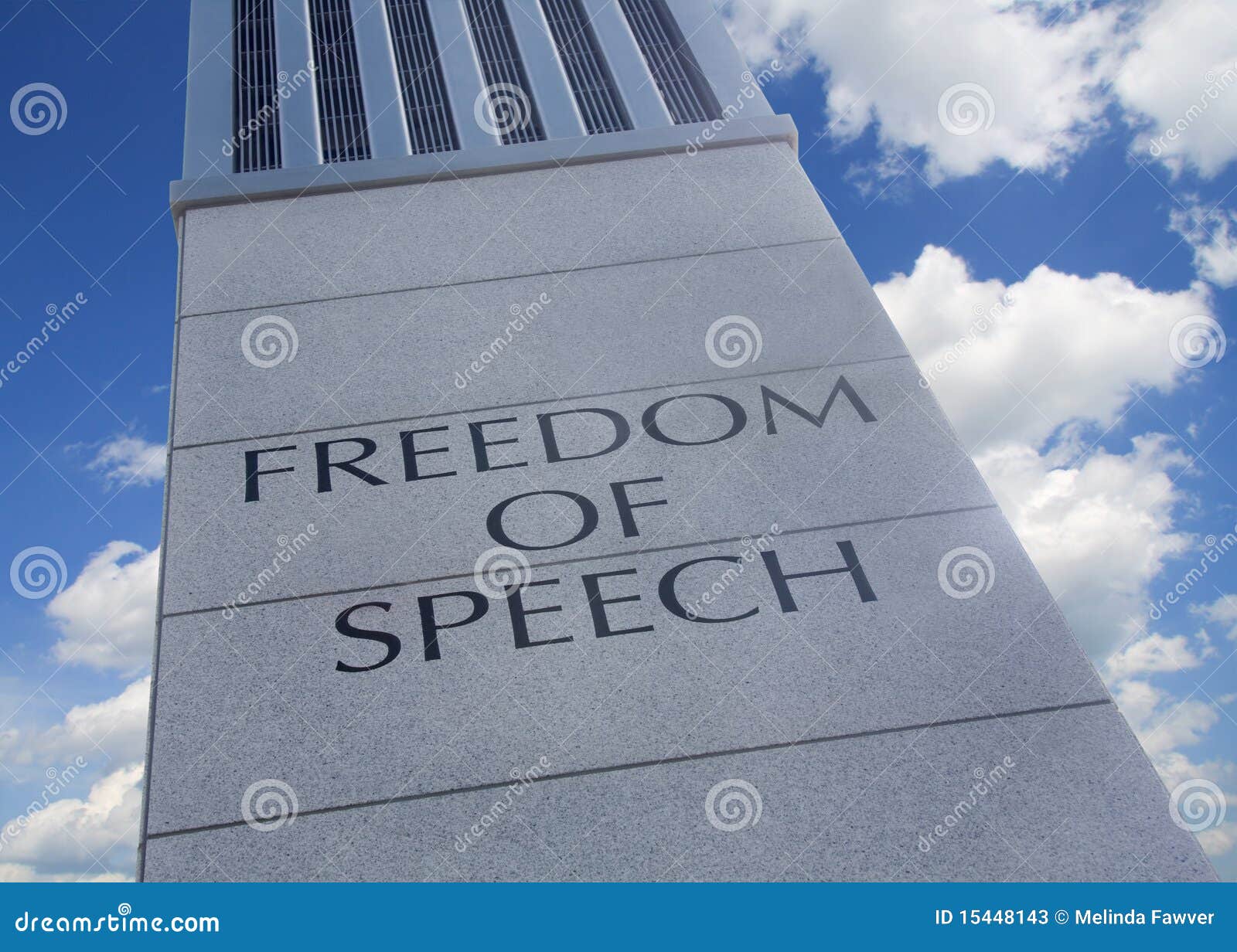
The Supreme Court on Thursday struck down a Minnesota law that prohibits voters from wearing T-shirts, hats and buttons expressing political views at polling places.

In another June 2018 article, “ Supreme Court Strikes Down Law Barring Political Apparel at Polling Places,” Adam Liptak writes: But after the 2016 presidential election and the increasing polarization of the country, the issue has taken on a new resonance. It’s something those in higher education have grappled with for decades.
#Freedome of speech free
It has happened across the country, at small private colleges and large public universities: an invited guest is heckled or shouted down or disinvited because of opposing political views.Īnd the incident is followed by a competing chorus of accusations about the rights of free speech versus the need to feel safe and welcome. In a June 2018 article, “ Colleges Grapple With Where - or Whether - to Draw the Line on Free Speech,” Alina Tugend writes: On Long Island, the Diocese of Rockville Centre, which runs a private Catholic school system, said students at its three high schools could face “serious disciplinary action” if they knelt during the anthem before sporting events.

#Freedome of speech professional
The controversy over kneeling in protest of racial injustice moved beyond the world of professional sports this week, when a number of schools told students they were expected to stand during the national anthem. In a September 2017 article, “ High Schools Threaten to Punish Students Who Kneel During Anthem,” Christine Hauser writes:

Next, read these excerpts from three recent articles about free speech cases that might affect your life: What does it say about speech?Ĭongress shall make no law respecting an establishment of religion, or prohibiting the free exercise thereof or abridging the freedom of speech, or of the press or the right of the people peaceably to assemble, and to petition the Government for a redress of grievances.
#Freedome of speech full
What do you think? Why is the freedom of speech an important right? Why might it be important to protect even unpopular or hurtful speech? And yet, when might the government draw reasonable limits on speech, and why?īefore answering this question, read the full text of the amendment. Judges, lawmakers and scholars continue to struggle with balancing strong speech protections with the necessity of maintaining a peaceful society. While the text and principle of the First Amendment have stayed the same, the court’s interpretation has indeed changed over time. Ohio in 1969, the court declared that even inflammatory speech, such as racist language by a leader of the Ku Klux Klan, should generally be protected unless it is likely to cause imminent violence. For example, a person cannot falsely yell “fire” in a crowded theater because that speech doesn’t contribute to the range of ideas being discussed in society, yet the risk of someone getting injured is high. United States in 1919 that individuals are not entitled to speech that presents a “clear and present danger” to society. The Supreme Court declared in the case Schenck v. Enshrined in the First Amendment to the Constitution, freedom of speech grants all Americans the liberty to criticize the government and speak their minds without fear of being censored or persecuted.Įven though the concept of freedom of speech on its face seems quite simple, in reality there are complex lines that can be drawn around what kinds of speech are protected and in what setting. One of the founding principles of the United States that Americans cherish is the right to freedom of speech.

For information about a cross-classroom “Constitutional Exchange,” see The Lauder Project. This extended Student Opinion question and a related lesson plan were created in partnership with the National Constitution Center in advance of Constitution Day on Sept.


 0 kommentar(er)
0 kommentar(er)
